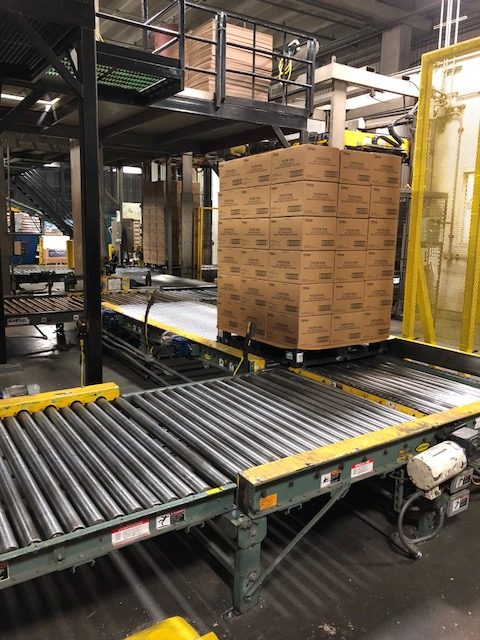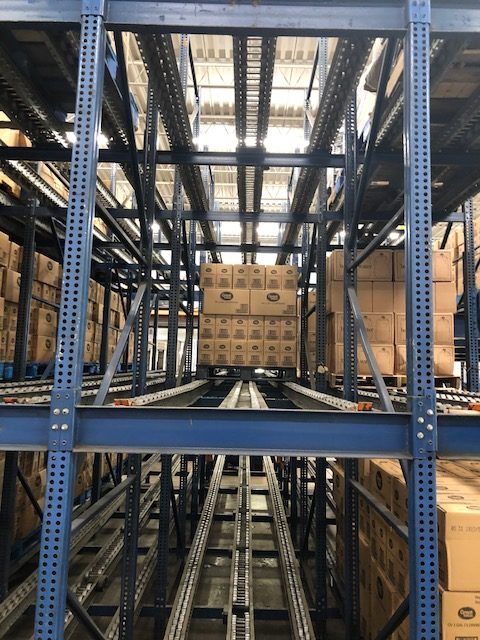If you’ve ever walked into a grocery store–or any sort of store–then you’ve probably seen a stocker scanning individual items before placing them back on the shelf. He or she is checking the stock keeping unit (SKU) to help keep track of what the store has on the shelf, what is still in inventory, and what may have disappeared due to inventory shrinkage. It may surprise some, though not those who work in logistics, that there is no direct equivalent to this scanning system in the logistics supply chain. The spotty nature of tracking and transparency in the supply chain costs companies money as a result of product damage and contamination, discrepancies, and missed orders.
Many of these supply chain issues are caused by human error and lapses in procedural control. It’s difficult to get a shift supervisor who is pressed for time to make sure every employee is doing the job properly, not making mistakes, and not fudging the numbers to cover mistakes. Even the most dedicated warehouseman will slip up at some point. As a result, more and more companies are adopting greater levels of supply chain automation to ensure process controls are followed to the letter.
How Supply Chain Automation Improves Process Controls
If a procedural control is programmed into an automated system, then that system will follow it exactly and do so every time it performs the process. It won’t think of cutting corners and it won’t think to skip lines of code if it’s in a hurry. These exacting standards are a great advantage for sensitive and valuable products in the cold chain. After all, a well-programmed robot won’t forget to close the door to the cooler, and in a properly set up automated system, there probably won’t even be a cooler door to worry about.
With an automated system, not only are the chances for serious and costly mistakes reduced, but labor costs are reduced as well.
In warehouses, these automated systems are called Automated Storage and Retrieval Systems (ASRS), and they take many forms. The most common uses a vertical crane equipped with forks that moves up and down the aisles depositing and retrieving pallets from the racks and bringing them to a handling area where more traditional human-operated forklifts take them to vehicles. Increasingly, however, more and more of these processes are being automated. An ASRS may deposit retrieved loads on a conveyor belt which takes them to an automatic truck loader, meaning that a human doesn’t have to do anything but supervise and intervene if something goes wrong. Alternatively, the ASRS may deposit its load to be picked up by an Automated Guided Vehicle (AGV) that will take the pallets where they need to go and either load them into trucks or stage them to be loaded.
The advantages of this level of automation are clear. Not only are the chances for serious and costly mistakes reduced, but labor costs are reduced as well. An ASRS can operate around the clock without needing rest or overtime. However, an ASRS on its own still lacks the tracking and transparency of product inventories you find at retailers. Getting that sort of transparency requires pairing an ASRS with a good warehouse management system and a way to track pallet loads.
Tracking and Tracing in Supply Chain Automation
The pharmaceutical industry is one industry that has made great strides in both supply chain automation and tracking. The Drug Supply Chain Security Act (DSCSA) mandates pharmaceutical tracking across different supply chains to prevent theft, fraud, and counterfeiting. The pharmaceutical industry is trying to get ahead of the legislation by adopting different track and trace measures, as well as removing points in the supply chain where their products could be subject to diversion. Many pharmaceutical companies have adopted a combination of methods, including supply chain automation, scannable barcodes, and Radio Frequency Identification (RFID) tracking.
 There is synergy between automation and tracking systems. Automated systems can be equipped to scan barcodes or pick up Radio-Frequency Identification (RFID) transmissions so that inventory can be automatically tracked as it makes its way into or out of storage. In the pharmaceutical industry, the tracking can and does go all the way down to each individual dose, and many automated pharmaceutical systems work at this level as well. In the majority of supply chains, though, tracking and handling will be at the load unit—or pallet—level through a pallet license plate that will have a barcode or an RFID transmitter. Each tracking method has its own advantages and disadvantages:
There is synergy between automation and tracking systems. Automated systems can be equipped to scan barcodes or pick up Radio-Frequency Identification (RFID) transmissions so that inventory can be automatically tracked as it makes its way into or out of storage. In the pharmaceutical industry, the tracking can and does go all the way down to each individual dose, and many automated pharmaceutical systems work at this level as well. In the majority of supply chains, though, tracking and handling will be at the load unit—or pallet—level through a pallet license plate that will have a barcode or an RFID transmitter. Each tracking method has its own advantages and disadvantages:
Barcodes
Advantages: The biggest advantage of barcodes is that they can be encoded with as much information as the shipper feels is necessary. Types of product, quantity in each container, and individual serial numbers for each container can all be associated with a barcode.
Disadvantages: A barcode has to be physically scanned, which means that it must be firmly fixed in a predictable location for an automated system to find. If the barcode isn’t correctly positioned, someone with a scan gun has to scan the pallet and its load manually, slowing the process down.
RFID
Advantages: The single greatest advantage of RFID trackers is that they can be read remotely and in a non-directional way. RFID technology offers the same data association as barcodes but with the advantage that the data can be read without having to precisely line up a scanner. This makes it possible to do an instantaneous recording of an entire truckload the moment it arrives at the gate.
Disadvantages: A big disadvantage of RFID technology is that setting up this sort of tracking requires a significant investment in RFID receiving equipment at multiple points along the supply chain. The cost for receiving equipment is substantial, and making the most of it requires the creation of a database that automated systems and on-site employees can modify in real time. This can also create additional costs in development and training.
These two methods of tracking essentially offer the same thing: the association of a number with inventory type, quantities, and a listing of variables that affect quality and a record of how they’ve changed over time. Of the two options, RFID is the superior form of tracking for properly equipped supply chains as it dovetails neatly with an automated system and makes it difficult to fail to record a pallet when receiving or dispatching shipments.
Getting the Most out of Supply Chain Automation
 If you’ve decided to automate any part of your supply chain, you need equipment that complements that automation instead of complicating it. Durable plastic pallets, rather than the more usual wood, integrate well with ASRS and may be RFID-enabled. Some high-quality plastic pallets have a Global Returnable Asset Identifier (GRAI), which can be read directly by scanning the pallet’s barcode or remotely by RFID equipment. Unlike the barcodes that you may find on pallet license plates—which are often internal company standards—this GRAI number can be tracked across different supply chains as long as they are properly equipped. That means that not only can your ASRS keep better track of the pallet and its load, so can your regional logistics coordinators and your retail partners.
If you’ve decided to automate any part of your supply chain, you need equipment that complements that automation instead of complicating it. Durable plastic pallets, rather than the more usual wood, integrate well with ASRS and may be RFID-enabled. Some high-quality plastic pallets have a Global Returnable Asset Identifier (GRAI), which can be read directly by scanning the pallet’s barcode or remotely by RFID equipment. Unlike the barcodes that you may find on pallet license plates—which are often internal company standards—this GRAI number can be tracked across different supply chains as long as they are properly equipped. That means that not only can your ASRS keep better track of the pallet and its load, so can your regional logistics coordinators and your retail partners.
The precision and reliability of plastic pallets is a great advantage for Automated Storage and Retrieval Systems.
Plastic has other advantages in the automated supply chain. A plastic pallet is made to specifications with little to no variation, while wood pallets will swell, shrink, and vary according to the wood they were made of. The precision and reliability of plastic pallets is a great advantage for Automated Storage and Retrieval Systems which aren’t able to compensate for unanticipated variations in loads or platforms. The durability of plastic is another feature that makes it ideal for use with automated systems. After installing an expensive ASRS, the last thing you want is nails and wood debris clogging conveyor belts and causing stoppages. Plastic pallets keep warehouse floors and machinery debris-free.
Using plastic pallets in an automated warehouse system is a bit like choosing the expensive gas when you fill up a sports car. You’ve made the investment, now you need to take extra care to keep the machinery running smoothly. Plastic pallets fill the same role by enhancing your investment in supply chain automation.
To get the most from your supply chain automation with the durable, RFID-enabled iGPS plastic pallet, give our team a call at 1-800-884-0225, email a specialist at switch@igps.net, or visit our contact page.



